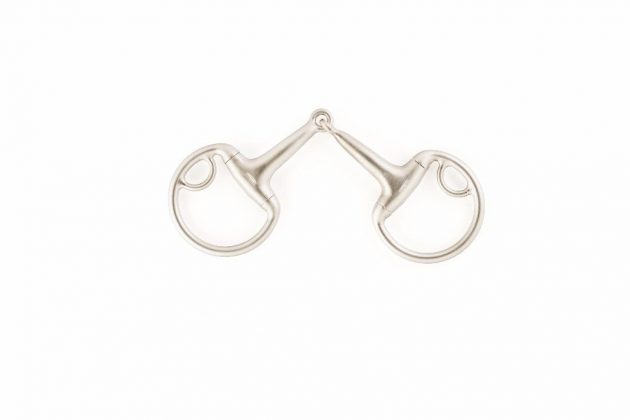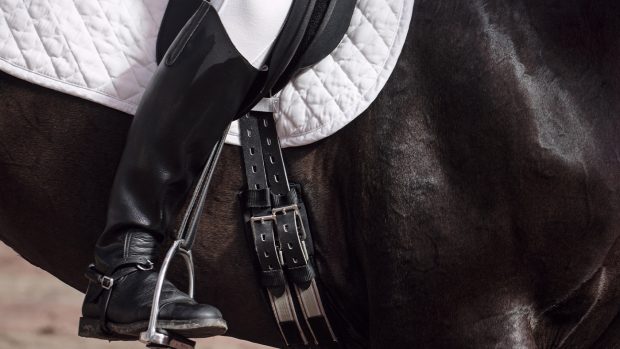You might have seen riders using belly bands on their horses and wondered what they were. Here’s some things you need to know about this piece of equipment...
What is a belly band?
The belly band is a neoprene or Lycra bandage that wraps around the horse’s body, sitting directly on the back underneath the saddle and behind the girth. It prevents rubs and marks from spurs or the rider’s leg and is easy to attach, with a Velcro tab underneath the horse’s belly, Velcro straps that wrap around the girth, and clips attaching to the D rings of the saddle.
How can they help?
“Some horses have such sensitive skin that just your heels rubbing against their sides cause friction burns and sores,” says Liza Oestreich, a prix st georges dressage rider in New York. “It is rare and obviously not always the reason that they are used — but it’s certainly one of the uses. I’ve also seen them used to protect ponies from little kids who can’t control their legs yet. The pony shouldn’t suffer because the kid can’t ride well yet.”
With the FEI blood rules becoming increasingly stringent and top riders being eliminated for having spur marks on their horse’s sides, belly bands look like a practical solution. It would not have stopped Steffan Peters’ elimination at the Reem Acra World Cup Final 2015 in Las Vegas for spur marks on Legolas, because they are illegal in FEI dressage competition (as well as British Dressage), but it might have saved Bertram Allen’s grand prix win at Olympia in 2015, when he was disqualified for a small cut on Quiet Easy’s side. They are legal in British and FEI showjumping, as well as the showjumping and cross-country phases of British Eventing.
Jessica Moore, who has groomed for international Brazilian showjumper Nando de Miranda, says: “It shocks me more riders are not using this tool in showjumping given the recent and not so very recent number of high profile eliminations from spur marks.”
That includes not only Bertram, but also Scott Brash at the Global Champions League competition in Cascais, and Marcus Ehning at the Nations Cup in Hickstead.
Why are some people sceptical?
However helpful it might be for thin-skinned horses or accidental rubs going over big fences, the belly band is piece of tack that’s almost as controversial as the spur marks themselves.
Like many riders, Jenna Calcaterra, the owner of a boarding and training stable in Virginia, thinks they cover up (quite literally) gaps in the education of rider and horse. “If you make a horse bleed with spurs either a) your horse is dead to your leg and that can be fixed with a bit more training, or b) your lower leg is so loose you accidentally make them bleed.”
Eventing champion Lucinda Green says she’s never considered using one, instead she recommends “taking the horse for some fun hacks, then maybe it will start to go forward with a little more lightness and enthusiasm”.
Continued below…

Which type of clip is right for your horse? Check out H&H’s helpful guide

6 eye-wateringly expensive items of tack with price tags you won’t believe
If you think you’re pushing the boat out by splashing out for a few Swarovski crystals on your browband or

Subscribe to Horse & Hound magazine today – and enjoy unlimited website access all year round
Where can you buy one?
Belly bands can be bought online from a number of suppliers including American company Equifit and the Scandinavian company Horze.
They are also called “spur guards,” sold by manufacturers like LoveHorses in Italy and Beval in the United States.
For all the latest news analysis, competition reports, interviews, features and much more, don’t miss Horse & Hound magazine, on sale every Thursday




